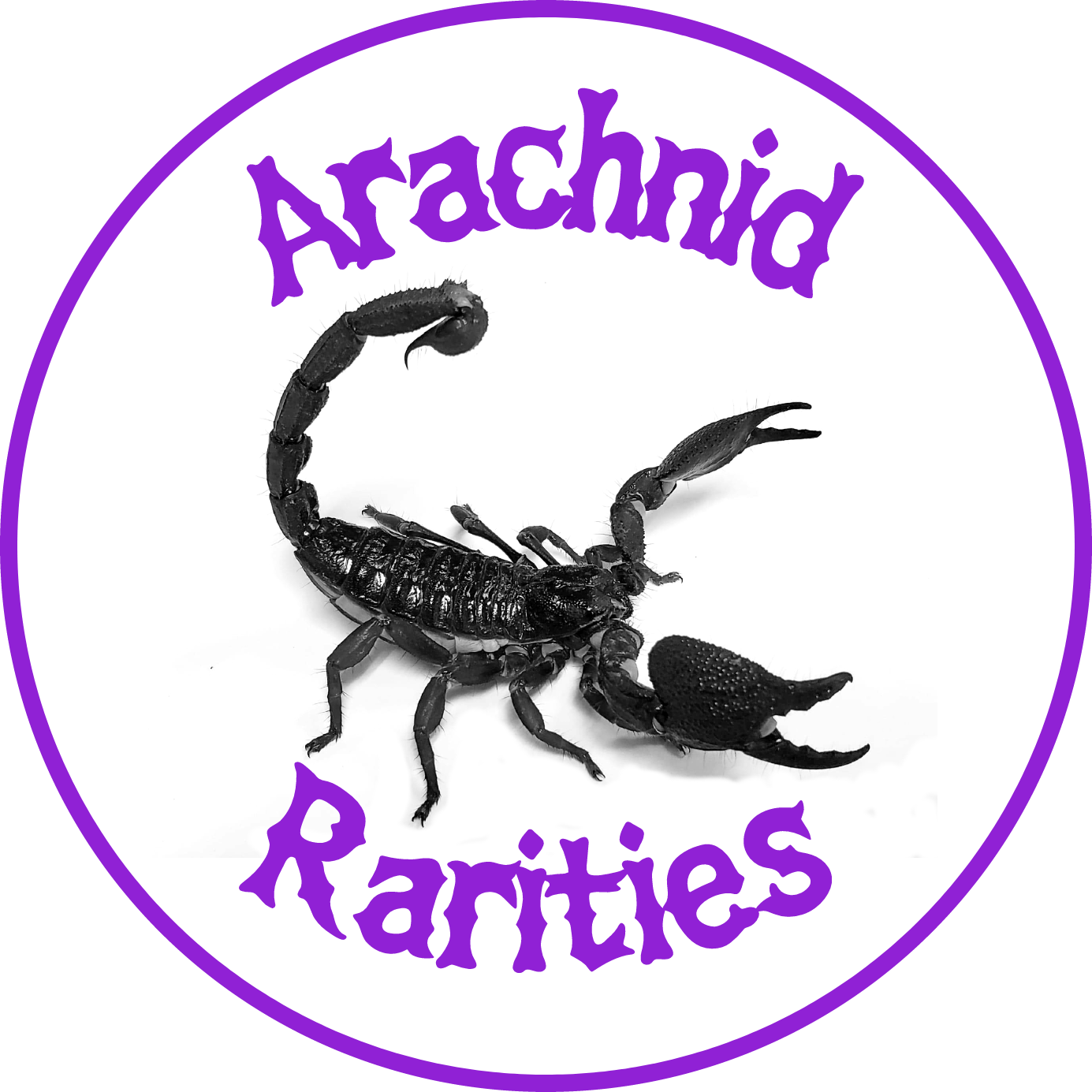Centruroides edwardsii (Edward's Bark Scorpion)
A medium sized but impressive bark scorpion species that has slight variations Centruroides margaritatus. These are also reemerging in the hobby and will be very popular so grab them now while you can. Now available in a 5 pack starter group! These are 2i/3i and are feeding well on small crickets and roaches.
Geographical Distribution: Western Mexico Coast, El Salvador, Honduras, Nicaragua, Costa Rica, Colombia, and Cuba (Note: The ones available originated from Nicaragua)
Size: Medium 3”-4” (7.5cm-10cm)
Habitat: Humid - Solitary Housing when young, Group Housing when mature (Note: cannibalism may still occur, many cases of females cannibalizing males in group housing)
Substrate: Peat/Coco fiber/Vermiculite (75/15/10 ratio) with vertical cork bark. Reptisoil works well too, can provide sphagnum moss to help maintain humidity. Substrate should stay moist (clump together) but not wet (squeeze water out).
Temperatures: 77F- 85F (25C-30C)
Water requirements: Ensure substrate stays moist by spraying the substrate with water as needed (Note, misting substrate is not sufficient, you must make sure the substrate is soaking up the water)
Photo Credit (©Joel Sartore/National Geographic Photo Ark)
A medium sized but impressive bark scorpion species that has slight variations Centruroides margaritatus. These are also reemerging in the hobby and will be very popular so grab them now while you can. Now available in a 5 pack starter group! These are 2i/3i and are feeding well on small crickets and roaches.
Geographical Distribution: Western Mexico Coast, El Salvador, Honduras, Nicaragua, Costa Rica, Colombia, and Cuba (Note: The ones available originated from Nicaragua)
Size: Medium 3”-4” (7.5cm-10cm)
Habitat: Humid - Solitary Housing when young, Group Housing when mature (Note: cannibalism may still occur, many cases of females cannibalizing males in group housing)
Substrate: Peat/Coco fiber/Vermiculite (75/15/10 ratio) with vertical cork bark. Reptisoil works well too, can provide sphagnum moss to help maintain humidity. Substrate should stay moist (clump together) but not wet (squeeze water out).
Temperatures: 77F- 85F (25C-30C)
Water requirements: Ensure substrate stays moist by spraying the substrate with water as needed (Note, misting substrate is not sufficient, you must make sure the substrate is soaking up the water)
Photo Credit (©Joel Sartore/National Geographic Photo Ark)
A medium sized but impressive bark scorpion species that has slight variations Centruroides margaritatus. These are also reemerging in the hobby and will be very popular so grab them now while you can. Now available in a 5 pack starter group! These are 2i/3i and are feeding well on small crickets and roaches.
Geographical Distribution: Western Mexico Coast, El Salvador, Honduras, Nicaragua, Costa Rica, Colombia, and Cuba (Note: The ones available originated from Nicaragua)
Size: Medium 3”-4” (7.5cm-10cm)
Habitat: Humid - Solitary Housing when young, Group Housing when mature (Note: cannibalism may still occur, many cases of females cannibalizing males in group housing)
Substrate: Peat/Coco fiber/Vermiculite (75/15/10 ratio) with vertical cork bark. Reptisoil works well too, can provide sphagnum moss to help maintain humidity. Substrate should stay moist (clump together) but not wet (squeeze water out).
Temperatures: 77F- 85F (25C-30C)
Water requirements: Ensure substrate stays moist by spraying the substrate with water as needed (Note, misting substrate is not sufficient, you must make sure the substrate is soaking up the water)
Photo Credit (©Joel Sartore/National Geographic Photo Ark)


